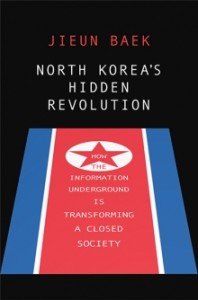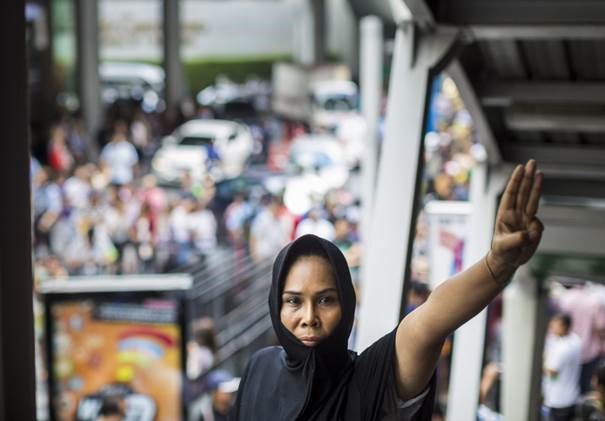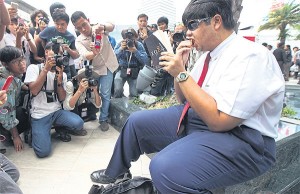US: UN experts call on United States to stop Dakota Access Pipeline
Palestine: Famous activist could go to prison for years of nonviolent protest
Mexico: Protesters call for President Nieto to resign
Spain: Display of force by animal rights movement
India: Buddhist nuns bike Himalayas to oppose human trafficking
Corruption continues to flourish in Africa
Bahrain: How the government is spinning its summer of repression
US: North Dakota pipeline protest in photos
Practical recommendations for supporting human rights defenders
France: Calais migrant camp protest causes huge disruption
Cuba: Government filtering mobile text messages, dissidents say
Hong Kong voters elect pro-democracy legislators to defend the city’s autonomy
Subtle Acts of Nonviolent Defiance in North Korea: Civil Resistance in the Making?
This Academic Webinar took place on on Tuesday, Nov. 8, 2016 at 12 p.m. EST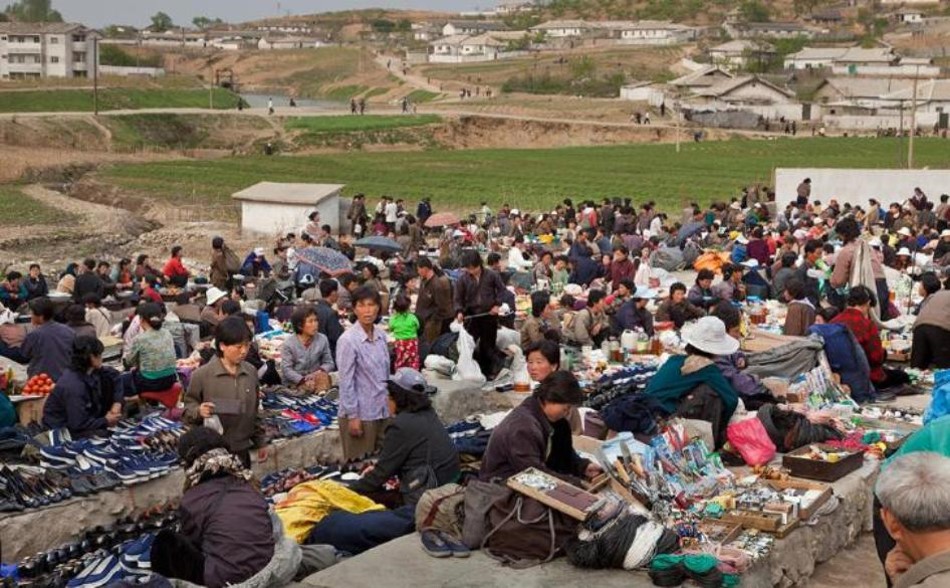
This webinar was presented by Jieun Baek
Watch the webinar below:
Webinar content:
1. Introduction of the Speaker: 00:00- 00:44
2. Presentation: 00:44 – 37:09
3. Questions and Answers: 37:09– 56:20
Webinar Summary:
The North Korean regime is notorious for exercising total authoritarian control over its citizens. But those who study nonviolent resistance movements know that no government can possibly have absolute control over a country. North Korea, despite what people generally think about the “hermetic kingdom,” is no different. There have been known instances of violent actions against the regime in the long history of Kim’s dynasty. Failed coup attempts, a bloody prison camp riot, and small-scale attacks on local authorities are few but notable examples.
In North Korea, there is no space for overt, traditional forms of civil resistance, such as marches, demonstrations, or strikes. However, in order to survive North Koreans have engaged in autonomous activities that have evolved into broader actions of defiance. This webinar will review some of the domestic developments that North Korea has experienced over the past two decades that shed more light on the evolution of the autonomous space in the country, augmented by its citizens’ actions in different spheres of life. These actions do not necessarily challenge the regime directly but in many aspects they defy its seemingly total, unshakable control over people’s affairs. Finally, we will explore the potential that these subtle acts of defiance, dissent, and subversion have for the future of civil resistance in one of the most closed societies in the world today.
Presenter
Jieun Baek is a Ph.D. candidate in Public Policy at the University of Oxford.
Previously, she was a research fellow at the Belfer Center for Science and International Affairs at Harvard University where she wrote North Korea’s Hidden Revolution: How the Information Underground is Transforming a Closed Society. Her book will be published by Yale University Press in November 2016.
Baek worked at Google, where, among other roles, she served as Google Ideas’ North Korea expert. Baek received her bachelor’s degree in Government and master’s degree in Public Policy from Harvard. Visit her online at www.JieunBaek.com.
Recommended Readings:
- Baek, Jieun. North Korea’s Hidden Revolution: How the Information Underground is Transforming a Closed Society Yale Univ., 2016. Print.
- Baek, Jieun. Hack and Frack North Korea: How the Information Underground is Changing a Closed Society Belfer Center for Science and International Affairs, Apr. 2015.
- Fahy, Sandra. Marching through Suffering: Loss and Survival in North Korea. Columbia UP, 2015. Print.
- Gause, Ken E. “Coercion, Control, Surveillance, and Punishment: An Examination of the North Korean Police State.” (2012): The Committee for Human Rights in North Korea.
- Lankov, Andrei. “Unlikely Dissidents in N. Korea?” Koreatimes. 07 Oct. 2012. Web.
Upcoming ICNC webinars. For the full list of upcoming ICNC webinars go here.
Past ICNC webinars. Please visit the ICNC Webinar Digest to hear all ICNC webinars delivered between 2010-2016 in an easily accessible format.
Civil Resistance against Democratically Elected Governments
This Academic Webinar took place on on Thursday, October 27, 2016 at 12 p.m. EST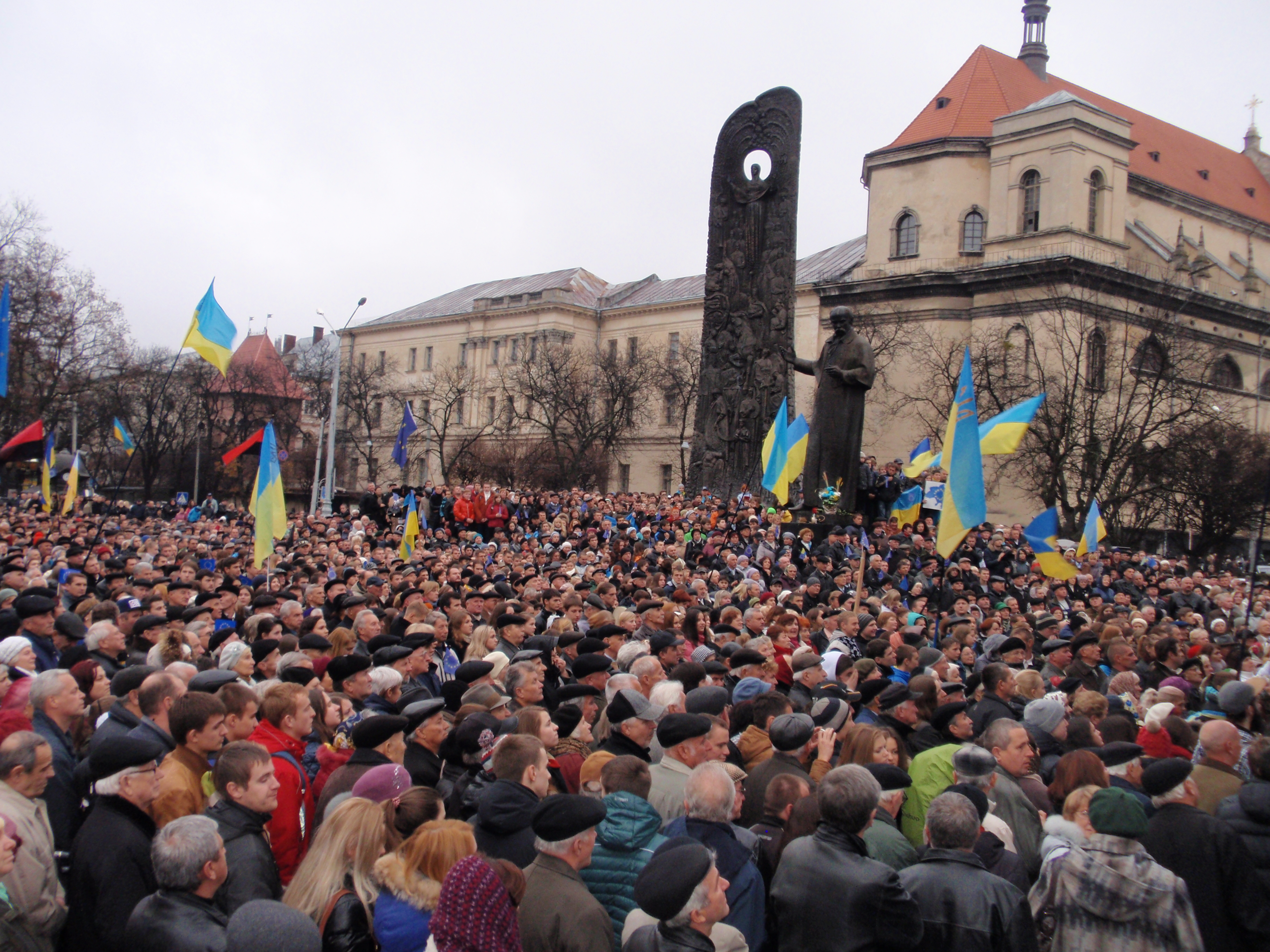
This webinar was presented by Stephen Zunes
Watch the webinar below:
Webinar content:
1. Introduction of the Speaker: 00:00- 00:59
2. Presentation: 00:59 – 31:24
3. Questions and Answers: 31:24– 52:38
Webinar Summary:
Due to the remarkable successes of civil resistance in legitimate pro-democracy struggles against autocratic governments, increasing numbers of political parties/coalitions in polarized societies are using many of its tactics to attempt to oust democratically elected governments which have fallen into disfavor with a significant portion of the population. On average, such movements have differed from more traditional anti-authoritarian civil insurrections in that they generally had a smaller base of support, were more prone to violence, were more dependent on elite allies (i.e., the military, the monarchy, corrupt judiciary, business interests, foreign powers), were less likely to have democratic goals, were less likely to succeed, and were less likely to resolve the underlying conflicts within the society. Nevertheless, a number of such uprisings have been successful, such as those in Ukraine, Thailand, Kyrgyzstan, and Egypt. The webinar will examine several examples of such insurrections, including the similarities and differences between them as well as address the questions such as: At what point might, due to severe repression or massive corruption, a government lose its right to rule, even if it was democratically elected? What if it simply loses majority support and impatient oppositionists don’t want to wait until the next election cycle? What if the resistance includes powerful and influential anti-democratic elements and other vested interests interested in political control than the common good?
Presenter
Dr. Ste phen Zunes is a Professor of Politics and International Studies at the University of San Francisco, where he serves as coordinator of the program in Middle Eastern Studies.
phen Zunes is a Professor of Politics and International Studies at the University of San Francisco, where he serves as coordinator of the program in Middle Eastern Studies.
He serves as a senior policy analyst for Foreign Policy in Focus project of the Institute for Policy Studies, an associate editor of Peace Review, a contributing editor of Tikkun, and a member of the academic advisory council for the International Center on Nonviolent Conflict.
He is the author of scores of articles for scholarly and general readership on Middle Eastern politics, U.S. foreign policy, international terrorism, nuclear nonproliferation, strategic nonviolent action, and human rights.
He is the principal editor of Nonviolent Social Movements (Blackwell Publishers, 1999), the author of Tinderbox: U.S. Middle East Policy and the Roots of Terrorism (Common Courage Press, 2003) and co-author (with Jacob Mundy) of Western Sahara: War, Nationalism and Conflict Irresolution (Syracuse University Press, 2010.)
Recommended Readings:
- Ackerman, Peter, Maciej Bartkowski, and Jack Duvall. “Ukraine: A Nonviolent Victory.” OpenDemocracy. 2014.
- Bartkowski, Maciej. “Popular Uprising against Democratically Elected Leaders. What Makes It Legitimate?” The Huffington Post. TheHuffingtonPost.com, 2016. Web.
- England, Philip. “Iceland’s ‘pots and Pans Revolution’: Lessons from a Nation That People Power Helped to Emerge from Its 2008 Crisis All the Stronger.” The Independent. Independent Digital News and Media, 2015.
- “Middle East Report Online | Middle East Research and Information Project.”
- Sombatpoonsiri, Janjira. “Assessing Civil Resistance: Social Movements’ Instrumentalisation of Nonviolent Tactics in Thailand and beyond.” OpenDemocracy., 2014.
- Velasco, Alejandro. “Where Are the Barrios? Protest and History in Venezuela — Cultural Anthropology.” Where Are the Barrios? Protest and History in Venezuela — Cultural Anthropology. N.p., 2015. Web. 31 Aug. 2016.
Upcoming ICNC webinars. For the full list of upcoming ICNC webinars go here.
Past ICNC webinars. Please visit the ICNC Webinar Digest to hear all ICNC webinars delivered between 2010-2016 in an easily accessible format.
Novel Civic Activism in Armenia: Its Nature, Challenges, Impact and Prospects
This Academic Webinar took place on Wednesday, October 12, 2016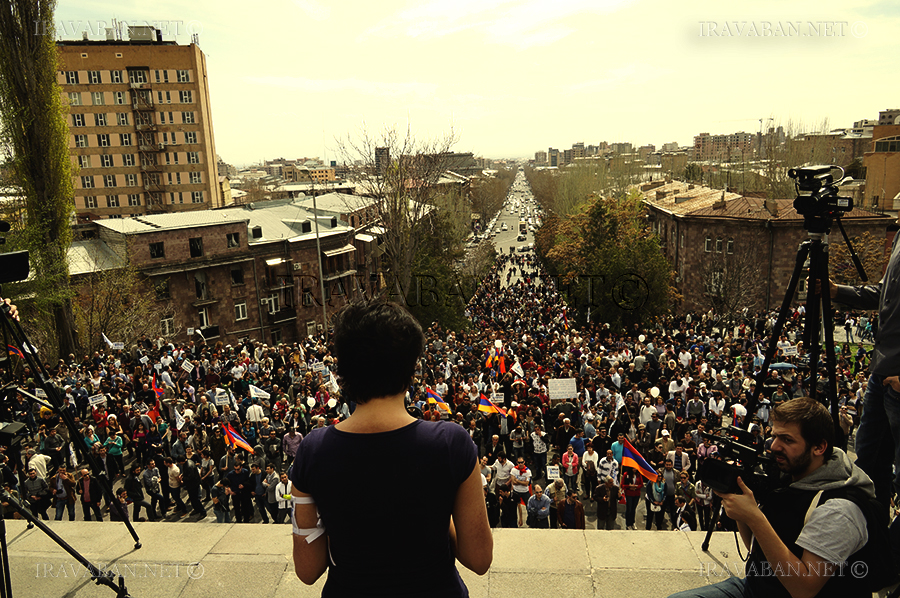 at 12 p.m. EST
at 12 p.m. EST
This webinar was presented by Valentina Gevorgyan
Watch the webinar below:
Webinar Content:
1. Introduction of the Speaker: 00:00- 01:24
2. Presentation: 01:24 – 36:35
3. Questions and Answers: 36:35 – 54:58
Webinar Summary:
The civic activism against the semi-authoritarian regime in Armenia has by now become a very important and visible element of civic and political life. This new wave of creative activism is expressed through largely nonviolent civic campaigns. These are youth-driven, single-purposed, sometimes spontaneously executed but also organized actions that rely on skillful use of social media and challenging specific government decisions. Usually the campaigns are small, but they can be viewed as emergent movements. Based on case studies of four civic activist campaigns, namely Save Teghut, Preserve Afrikyan Club Building, Dem Em (“I Am Against”) and Electric Yerevan — the webinar will reflect on the role of independent civic activism in Armenia, describe civic groups at the forefront, and analyze organized civic actions and methods used. The talk will address the origin and reasons for the campaigns, their challenges and impact so far, lessons learnt as well as prospects for future activism. The presentation will also reflect on both cooperation and tensions between formal civic organizations and informal civic groups and networks in the country.
Presenter
 Valentina Gevorgyan is a researcher and writer with experience in research and policy analysis in contemporary social and political fields concerning Armenia. Her academic interests are in the spheres of society – state relations (with a particular focus on public participation in decision making processes), EU – Armenia relations, democratisation processes of the Eastern Partnership (EaP) countries and transatlantic relations.
Valentina Gevorgyan is a researcher and writer with experience in research and policy analysis in contemporary social and political fields concerning Armenia. Her academic interests are in the spheres of society – state relations (with a particular focus on public participation in decision making processes), EU – Armenia relations, democratisation processes of the Eastern Partnership (EaP) countries and transatlantic relations.
Ms. Gevorgyan has served as a Senior Researcher of a four-year project (2012-2016) on Armenian civil society supported by the University of Fribourg. She has also served as a national expert for a study on public administration reform in the EaP countries supported by the European Commission.
Ms. Gevorgyan holds MA degree in Political Science from the American University of Armenia (AUA), and is an Open Society Foundations Policy Research Initiative Fellow. Ms. Gevorgyan has published and co-authored articles and reports on civil society, volunteering, and security. She has presented at a number of academic conferences in the region of the South Caucasus and Europe. Currently she works as a Research Associate at the Turpanjian Center for Policy Analysis at AUA.
Recommended Readings:
- Babajanian, Babken V. 2008. Social Capital and Community Participation in Post-Soviet Armenia: Implications for Policy and Practice. Europe-Asia Studies 60 (8): 1299–1319.
- Blue, Richard N, and Yulia G. Ghazaryan. 2004. Armenia NGO Sector Assessment: A Comparative Study. NGO Strengthening Program. Yerevan, Armenia: World Learning for International Development.
- Kankanyan, Nina. 2015. Environmental Activism in Armenia. Yerevan, American University of Armenia.
- Hakobyan, Lusine, and Mane Tadevosyan. 2010. Culture of Volunteerism in Armenia. Case Study. Case Study. CIVICUS Civil Society Index. Yerevan, Armenia: Counterpart International. http://program.counterpart.org/Armenia/wpcontent/uploads/2011/02/CSI-Case-Study-1.pdf
- Hakobyan, Lusine, Mane Tadevosyan, Alex Sardar, and Arsen Stepanyan. 2010. Armenian Civil Society: From Transition to Consolidation. Analytical Country Report. CIVICUS Civil Society Index. Yerevan, Armenia: Counterpart International. http://program.counterpart.org/Armenia/?page_id=48
- Howard, Marc Morjé. 2002. Postcommunist Civil Society in Comparative Perspective. Demokratizatsiya 10 (3): 285–305.
- Ishkanian, Armine, Evelina Gyulkhandanyan, Sona Manusyan, and Arpy Manusyan. 2013. Civil Society, Development and Environmental Activism in Armenia. The London School of Economics and Political Science (LSE). http://eprints.lse.ac.uk/54755/
- Paturyan, Yevgenya, and Valentina Gevorgyan. 2014. Trust Towards NGOs and Volunteering in South Caucasus: Civil Society Moving Away from Post-Communism? Southeast European and Black Sea Studies 14 (2): 239–62.
- Paturyan, Yevgenya, and Valentina Gevorgyan. 2014. Armenian Civil Society After Twenty Years of Transition: Still Post-Communist? Turpanjian Center for Policy Analysis. http://tcpa.aua.am/files/2012/07/Armenian_Civil_Society_after_Twenty_Years_of_Transition_Manuscript_November_2014-fin.pdf
Upcoming ICNC webinars. For the full list of upcoming ICNC webinars go here.
Past ICNC webinars. Please visit the ICNC Webinar Digest to hear all ICNC webinars delivered between 2010-2016 in an easily accessible format.
Successes and Challenges of Nonviolent Actions in Thailand
This Academic Webinar took place on Tuesday, September 27, 2016 at 12 p.m. EST
This webinar was presented by Janjira Sombatpoonsiri
Watch the webinar below:
Webinar content:
1. Introduction of the Speaker: 00:00- 00:58
2. Presentation: 00:59 – 51:52
3. Questions and Answers: 51:53 – 1:02:57
Webinar Summary
Subsequent to the 1992 ‘people power’ that overthrew the long rule of military government, Thailand has gone through a political rollercoaster. The growing democratic space enabled new political actors to emerge, while a liberalized economy empowered the country’s rural poor to move up the social ladder. The traditional ruling class have regarded these nascent forces as a threat to their status quo and privilege. The struggle between the two color-coded camps – Red and Yellow Shirts – was set in motion since 2005, culminating in the latest coup in 2014. In this talk, I will demonstrate an episode of civil resistance that aims to de-legitimize the incumbent military junta. Janjira 1Groups of students, activists and ordinary citizens have courageously staged symbolic protests and organized public meetings, despite the imposed draconian laws and continuous crackdown. I argue that these attempts have born some degree of successes in challenging the junta’s authority. However, they face critical challenges caused by the junta’s learning curb and existing social division. The Thai case serves as a reminder to rethink a strategy of civil resistance that can effectively challenge military dictatorship in the 21st century.
Presenter
Janji ra Sombatpoonsiri is an assistant professor at the Faculty of Political Science, Thammasat University in Bangkok.
ra Sombatpoonsiri is an assistant professor at the Faculty of Political Science, Thammasat University in Bangkok.
She is the author of the Ph.D. thesis-turned book Humor and Nonviolent Struggle in Serbia (New York: Syracuse University Press, 2015).
Her latest journal articles and book chapters include “Playful subversion: Red Sunday’s Nonviolent Activism in Thailand’s Post-2010 Crackdown,” Journal of Peace & Policy Vol. 20 (2015); “Nonviolent action as the interplay between political contexts and ‘insider’s knowledge’: exploring Otpor’s preference for humorous protest across Serbian towns,” in Civil Resistance: Process and Practice, ed. Kurt Schock (Minnesota: University of Minnesota Press, 2015), 59-92; and “Securitization of civil resistance: the Thai junta and beyond,” Journal of Resistance Studies, vol. 1, no. 2 (2015): 85-126.
In addition, she has written op-ed articles for a Thai newspaper, focusing the politics of nonviolent struggle. She currently serves as the co-Secretary General of Asia-Pacific Peace Research Association (APPRA).
Recommended Readings:
- Erickson Nepstad, S. (2015) ‘How Regimes Counter Civil Resistance Movements,’ in K. Schock (ed.), Civil Resistance: Comparative Perspective on Nonviolent Struggle. Minnesota: University of Minnesota Press, pp. 121-44.
- Janjira S. (2015) ‘Playful Subversion: Red Sunday’s Nonviolent Activism in Thailand’s Post-2010 Crackdown,’ Journal of Peace & Policy 20: 93-107.
- Janjira, S. (2015) ‘Securitisation of civil resistance: Thailand’s military junta and beyond,’ Journal of Resistance Studies 2(1): 85-126.
- Kasian T. (2016) ‘The Irony of Democratization and the Decline of Royal Hegemony in Thailand,’ Southeast Asian Studies 2(2): 217-37.
- Kurtz, L. and L. Smithy (eds.) (forthcoming) The Paradox of Repression.
- McCargo, D. (2005) ‘Network monarchy and legitimacy crises in Thailand,’ The Pacific Review 18 (December), pp. 499-519.
- Reynolds, C.J., ed. (2004) National Identity and its Defender: Thailand Today. Chaing Mai: Silkworm Books.
- Saxer, M. (2014) In the Vertigo of Change: How to Resolve Thailand’s Transformation Crisis. Bangkok: OpenWorlds.
Upcoming ICNC webinars. For the full list of upcoming ICNC webinars go here.
Past ICNC webinars. Please visit the ICNC Webinar Digest to hear all ICNC webinars delivered between 2010-2016 in an easily accessible format.
Civilian Strategies in Gold Mining Conflicts in Peru: From Violence to Disciplined Nonviolent Resistance
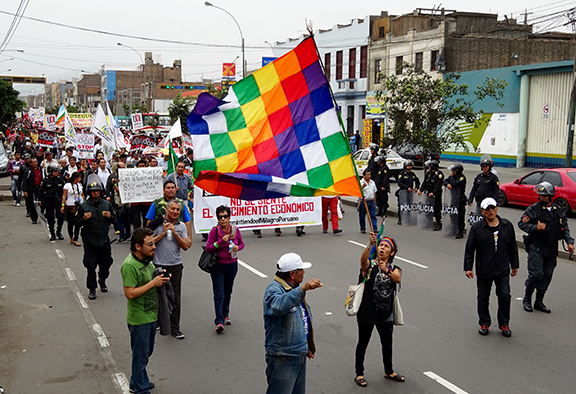
5,000 people marched in Lima to reject extractive politics during the IMF and World Bank’s annual governor’s meeting in November 2015.
This Webinar took place on Thursday, September 15, 2016 at 12 p.m. EST.
This webinar was presented by Michael Wilson Becerril
Watch the webinar below:
Webinar content:
1. Introduction of the Speaker: 00:00- 02:09
2. Presentation: 02:10 – 32:24
3. Questions and Answers: 32:25 – 53:53
Webinar Summary
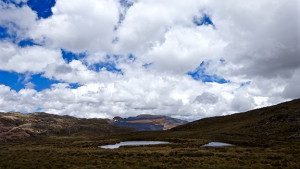
Barrick’s ‘Lagunas Norte’ gold mine peeks through the mountains, across the lakes to which the mine company wants to expand
Research shows that nonviolent means of waging a conflict are not only morally but strategically more effective than violence. Still, not much is known about when movements respond to violent repression with violence or when they will choose nonviolent resistance instead. This webinar presentation will shed light on some of the reasons why groups might transform their tactics from impromptu riots and violent responses to disciplined and strictly nonviolent means of struggle. Ethnographic evidence from four cases of gold mining conflicts in Peru will help us illustrate how, in response to an adversary’s discourse that branded resisters as criminals and terrorists, activists planned, strategized and trained in self-restraint, adopted nonviolent frames and tactics, and disciplined their public actions.
Past ICNC webinars. Please visit the ICNC Webinar Digest to hear all ICNC webinars delivered between 2010-2016 in an easily accessible format.
Presenter
Michael S. Wilson Becerril is a Mexico City native and a Ph.D. candidate at the University of California, Santa Cruz, where he focuses on peace and conflict in Latin America. He is also a Research Fellow at the Council on Hemispheric Affairs and a Ph.D. Fellow with the International Center on Nonviolent Conflict. As an undergraduate, Wilson was a co-host of a news radio show, Student Body President, and News Editor of the campus newspaper.
He is currently living in Peru and conducting fieldwork for his dissertation. His research centers on extractive industry behavior, political violence, civil resistance, and the politics of media. His work has been published in Peace Review: A Journal of Social Justice, COHA’s Washington Report on the Hemisphere, the North American Congress on Latin America’s Report on the Americas, Waging Nonviolence, Human Rights Review, AlterNet, Tikkun, Counterpunch, and others. He can be followed on Twitter: @guidolions.
Recommended Readings:
- Boykoff, Jules. 2006. “Framing Dissent: Mass-Media Coverage of the Global Justice Movement.” New Political Science 28 (2): 201-228.
- Dudouet, Veronique. 2009. From War to Politics: Resistance/Liberation Movements in Transition. Berghof Report Nr. 17 (April). Berlin: Berghof Research Center for Constructive Conflict Management.
- Gould, John A., and Edward Moe. 2012. “Beyond Rational Choice: Ideational Assault and the Strategic Use of Frames in Nonviolent Civil Resistance.” In Research in Social Movements, Conflicts and Change: Special Issue on Nonviolent Conflict and Civil Resistance, eds. Sharon
- Erickson Nepstad and Lester R. Kurtz. Emerald Group Publishing Limited. Haalboom, Bethany. 2011. “Framed Encounters with Conservation and Mining Development: Indigenous Peoples’ Use of Strategic Framing in Suriname.” Social Movement Studies 10 (4): 387-406.
- McLeod, Jason. 2015. “From the Mountains and Jungles to the Villages and Streets: Transitions from Violent to Nonviolent Resistance in West Papua.” In Civil Resistance and Conflict Transformation: Transitions from Armed to Nonviolent Struggle, ed. Véronique Dudouet. New York: Routledge.
- Postill, John. 2014. “Spain’s Indignados and the Mediated Aesthetics of Nonviolence.” In The Political Aesthetics of Global Protest: Beyond the Arab Spring, eds. P. Werbner, K. Spellman-Poots, and M. Webb. Edinburgh: Edinburgh University Press.
West Papua: Outrage over arrests of 50 activists
How South African anti-rape protesters disrupted Zuma speech
Peru: Women protest rising tide of murder and sexual violence
North Korea: Defector Thae Yong-ho was ‘sick and tired of regime’
U.S.: Native American protesters disrupt work on oil pipeline
ICNC High School Curriculum Fellowship 2017/2018
 ICNC is launching its second edition of a grant program for high school educators from around the world to support development and implementation of the civil resistance education for high school students in fall 2017 and winter/spring 2018.
ICNC is launching its second edition of a grant program for high school educators from around the world to support development and implementation of the civil resistance education for high school students in fall 2017 and winter/spring 2018.
The application deadline: July 5, 2017.
Before applying, check for more information about the Fellowship by reviewing the following sections:
Fellowship Award
What is Expected from a Fellow
Why to Teach Civil Resistance in High School
Eligibility
Time Frame for Teaching
Language of Instruction
Fellowship Requirement
Required Documentation
Resources in Support of Curriculum Proposal Development
Funds Distribution
Check also the profiles of our 2016 High School Fellows
The support grant is in the amount of $1,000 each and will be offered for up to 8 motivated educators who will embark on the task of developing and teaching a curriculum on nonviolent civil resistance to high school students in either fall semester of 2017 or winter and spring 2018.
What is Expected from a Fellow
Selected fellows will integrate at least six, 45-minute long curriculum units on civil resistance into one of their existing social science courses or create a self-standing seminar on civil resistance as part of the high school senior/junior curriculum, or will set up an after-school seminar.
Why to Teach Civil Resistance in High School
Civil resistance education is emerging as an important element of the college-level educational experience, with a growing number of courses on civil resistance offered at various universities, including in the areas of conflict, peace and security studies, political science, international relations and sociology. As an interdisciplinary topic, civil resistance intersects various academic disciplines: politics, history, sociology, social-psychology, international relations.
A specialized course on civil resistance for high school students can offer them knowledge and skills that are relevant to future advanced studies in broadly understood social sciences.
At the same time, high school students who may be interested in careers in foreign policy, government, community organizing, or civil society organizations can find a course on civil resistance to be a career-oriented learning opportunity. As nonviolent civil resistance movements increasingly shape international affairs and domestic politics in countries around the world, government and civic actors, as well as journalists, are increasingly likely to encounter this phenomenon in their work. In such cases, knowledge about civil resistance movements can constitute an additional career advantage. Such a course may also enhance the students’ skills and commitment to be active citizens in their communities.
Educators with teaching experience from:
- Public/state high schools
- Charter high schools
- Private high schools
- After or out-of-school programs and enrichment organizations working with high school-aged students
can apply for the ICNC High School Curriculum Fellowship.
Fellows are expected to set up and teach the course either in Fall and Winter 2017 or Spring 2018 for a minimum of 6 weeks.
Language of Reporting and Instruction
- Application documents (e.g. application for, syllabus proposal, CV) must be in English
- Reporting to ICNC (two reports with requested documentation will be due at the beginning and end of the course) must be done in English regardless of the language of instruction
- Non-English languages of instruction can be considered provided there are enough translated readings on civil resistance in a specific language; or if a fellow takes it upon him/herself to translate relevant English-language texts
Required Teaching Load
- Fellows have to develop and teach a curriculum on civil resistance. The curriculum should consist of a minimum of 6 class units, each at least 45 minutes long, that will be distributed over a minimum of 6 weeks (not longer than 12 weeks) to give students ample time to reflect on the material, review assigned readings, participate meaningfully in classroom discussions and be able to complete written or oral homework. (see also Class Type)
Acceptable Student Grade Level
The class will be open to:
- high school seniors (final year of high school; 17-18 years old),
- high school juniors (two years prior to high school graduation; 16-17 years old) and, possibly,
- high school sophomores (three years prior to high school graduation; 15-16 years old), provided that seats are not filled by seniors or juniors that must be given preference in enrollment.
Required Enrollment Numbers
- A minimum of 15 students will need to enroll and attend the class. Preference must be given to high school seniors and juniors though, if seats remain available, the class can be opened to interested high school sophomores
Possible Class Type
- integrated curriculum units: a minimum of six, 45-minute long units on civil resistance over a minimum of a 6 week period that are integrated into an existing social science course (e.g., Politics, Civics, Sociology, History, Geography)
or
- a self-standing mandatory or elective course on civil resistance with a minimum of six, 45-minute long units on civil resistance, distributed over a minimum of 6 weeks
or
- a seminar on civil resistance organized as part of a social science club, after school, or enrichment program or study club: a minimum of six, 45-minute long, units on civil resistance, distributed over a minimum of 6 weeks
I. Completed online application with applicant’s CV included
II. Curriculum/syllabus proposal on civil resistance that at a minimum includes the following topics with relevant readings and class assignments:
- Defining civil resistance and movements: What are they and what are they not? (with a possible focus on misconceptions about civil resistance)
- Civil resistance in history: historical cases of nonviolent civil resistance movements and campaigns, which may include international, national, or sub-national examples. Examination of the origin and emergence, conduct, impact and aftermath of these movements and campaigns
- The record and effectiveness of civil resistance movements: What have they achieved, and what is their historic success rate?
- Strategies and tactics of civil resistance campaigns
Additional possible topics include:
- Playing the computer-based game People Power throughout the duration of the course as part of the student home assignment. See the instructions on how to integrate the game into the course.
- Examining the dynamics of civil resistance including but not limited to how populations unify, mobilize, resist repression and cause it to backfire, engage in public communications, gain defections from their opponents, choose tactics and strategies.
In the proposed curriculum/syllabus:
- Specify at least 6 weekly session topics/titles
- Provide descriptions for each of the topics (in addition, you might include questions that will be explored/discussed for each topic session)
- List relevant readings (on average 15-20 pages of reading per week) for each session and any assignments and classwork that will be expected for a specific session or sessions as well as any midterm or final assignments
- Include a sample of the course assignments relevant to the subject of civil resistance that students will be required to complete during the course and the information on how these assignments will be evaluated/assessed. Possible final essay could assess a civil resistance campaign along the lines of “How ‘powerless’ youth and others helped organize ‘people power’ toward change in a public, institutional, or corporate policy”
- Utilize the resources listed below in developing your syllabus/curriculum proposal
Resources in Support of Curriculum Proposal Development
In developing the curriculum proposal on civil resistance applicants are encouraged to review the following resources:
- ICNC Conflict Summaries on Civil Resistance
- ICNC Educational Resources
- ICNC Academic Online Curriculum (that provides a comprehensive list of topics in civil resistance studies, reading lists, videos, teaching aid and syllabi samples and other useful resources)
- Recorded ICNC Webinars (where appropriate, consider integrating selected webinars into the syllabus as part of the student assignments)
- People Power: The Game of Civil Resistance
- Swarthmore Global Nonviolent Action Database
- Nonviolent Conflict News (for current events)
Documentaries
- A Force More Powerful, 2000
- Bringing Down a Dictator, 2001
- The Singing Revolution, 2006
- Orange Revolution, 2007
Selected chapters from the following books can be considered for reading assignments for the senior and junior high schoolers:
- Peter Ackerman and Jack DuVall, A Force More Powerful: A Century of Nonviolent Conflict (New York: Macmillan, 2000)
- Maciej Bartkowski, ed. Recovering Nonviolent History. Civil Resistance in Liberation Struggles (Boulder, CO: Lynne Rienner Publishers, 2013)
- Shaazka Beyerle, Curtailing Corruption. People Power for Accountability and Justice (Boulder, CO: Lynne Rienner Publishers, 2014)
- Kurt Schock, Civil Resistance Today, (Cambridge: Polity Press, 2015)
More advanced core reading on civil resistance includes:
- Erica Chenoweth and Maria Stephan, Why Civil Resistance Works. The Strategic Logic of Nonviolent Conflict (New York: Columbia University Press, 2011)
Additional resources
- Selected Bibliography on Civil Resistance (March 2016): for readings more accessible for high school students check: Online publications, blogs, media articles & studies
- A Diplomat’s Handbook for Democracy Development Support
As part of the grant award, fellows will also be expected to prepare, among others:
- learning gains instrument(s) prior to the start of the course to be used to monitor and assess progress in students’ learning about civil resistance. Review the learning gains templates that will need to be customized depending on the developed course content on civil resistance:
- Template of a pre-seminar learning gains survey (distributed prior to the start of the course)
- Template of a post-seminar learning gains survey (distributed at the end of the course)
- Learning gains survey and results submitted by one of the High School Fellows.
- final course evaluation with students’ feedback on the course content on civil resistance. Review a template of a final course evaluation that will need to be customized according to the course content developed as part of the accepted curriculum proposal
- final report to be submitted to ICNC after the course ends on the delivered content, including any innovative teaching tools used, students’ learning gains (how they were measured and what the results were), results of students’ final evaluation, and student feedback on the game or other relevant course exercises, and general lessons learnt
The funds for the Fellowship will be disbursed in two equal installments:
- at the beginning of the course, after the submission of the updated syllabus and the confirmation of the enrollment numbers and list of students
- at the end of the course after the submission of the final report and evaluation results

